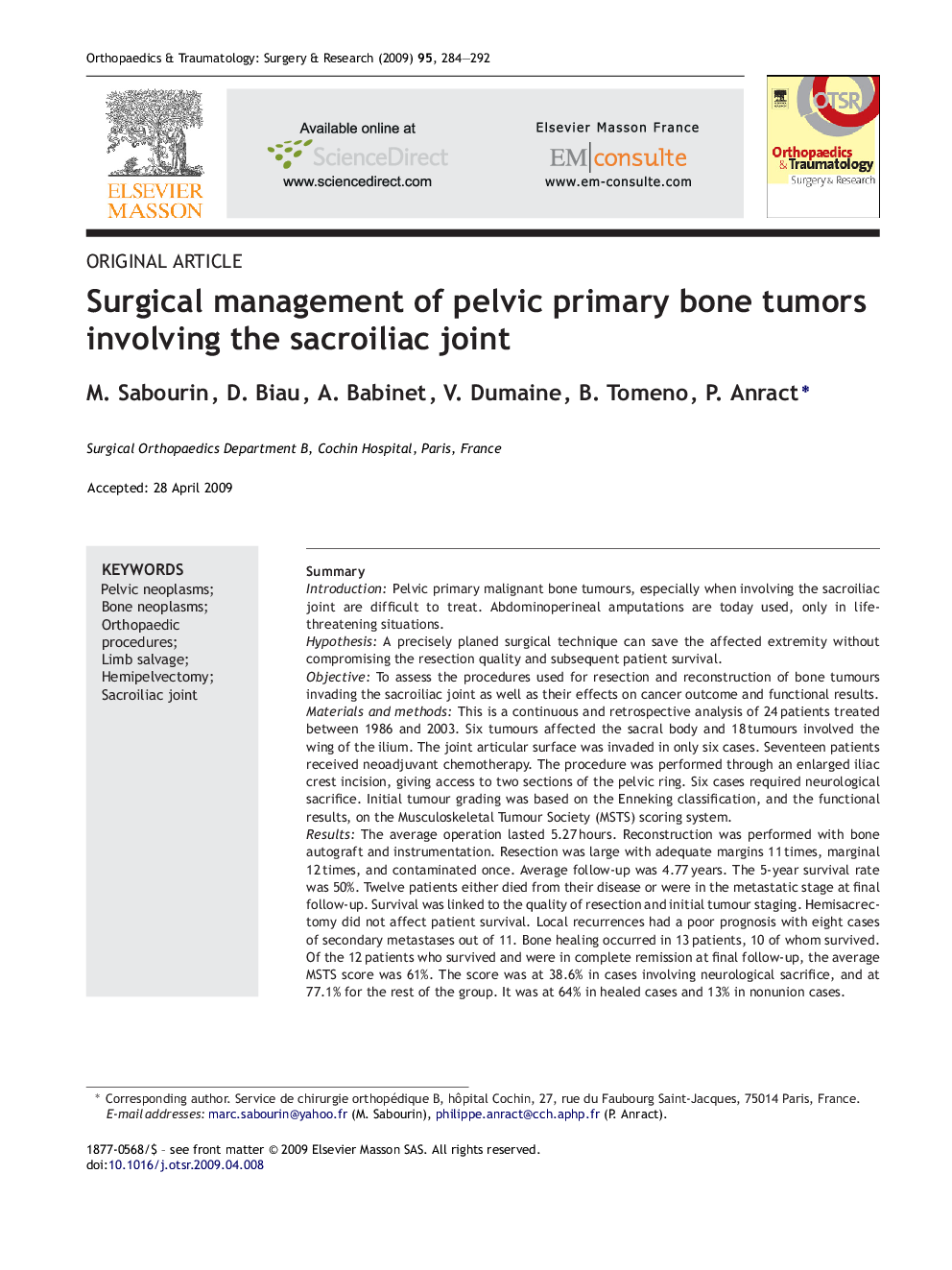| کد مقاله | کد نشریه | سال انتشار | مقاله انگلیسی | نسخه تمام متن |
|---|---|---|---|---|
| 4082621 | 1267648 | 2009 | 9 صفحه PDF | دانلود رایگان |

SummaryIntroductionPelvic primary malignant bone tumours, especially when involving the sacroiliac joint are difficult to treat. Abdominoperineal amputations are today used, only in life-threatening situations.HypothesisA precisely planed surgical technique can save the affected extremity without compromising the resection quality and subsequent patient survival.ObjectiveTo assess the procedures used for resection and reconstruction of bone tumours invading the sacroiliac joint as well as their effects on cancer outcome and functional results.Materials and methodsThis is a continuous and retrospective analysis of 24 patients treated between 1986 and 2003. Six tumours affected the sacral body and 18 tumours involved the wing of the ilium. The joint articular surface was invaded in only six cases. Seventeen patients received neoadjuvant chemotherapy. The procedure was performed through an enlarged iliac crest incision, giving access to two sections of the pelvic ring. Six cases required neurological sacrifice. Initial tumour grading was based on the Enneking classification, and the functional results, on the Musculoskeletal Tumour Society (MSTS) scoring system.ResultsThe average operation lasted 5.27 hours. Reconstruction was performed with bone autograft and instrumentation. Resection was large with adequate margins 11 times, marginal 12 times, and contaminated once. Average follow-up was 4.77 years. The 5-year survival rate was 50%. Twelve patients either died from their disease or were in the metastatic stage at final follow-up. Survival was linked to the quality of resection and initial tumour staging. Hemisacrectomy did not affect patient survival. Local recurrences had a poor prognosis with eight cases of secondary metastases out of 11. Bone healing occurred in 13 patients, 10 of whom survived. Of the 12 patients who survived and were in complete remission at final follow-up, the average MSTS score was 61%. The score was at 38.6% in cases involving neurological sacrifice, and at 77.1% for the rest of the group. It was at 64% in healed cases and 13% in nonunion cases.DiscussionThe survival of patients presenting with a sacroiliac joint tumour is substantially related to both tumour histology and resection quality. Local recurrences carry a poor prognosis with a high rate of secondary metastatic dissemination. In situations where disease control can be achieved, the proposed method of reconstruction allows, satisfactory bone healing and fair functional recovery, provided no major neurological sacrifice has taken place.Level of evidence: level IV: Retrospective Therapeutic Study.
Journal: Orthopaedics & Traumatology: Surgery & Research - Volume 95, Issue 4, June 2009, Pages 284–292